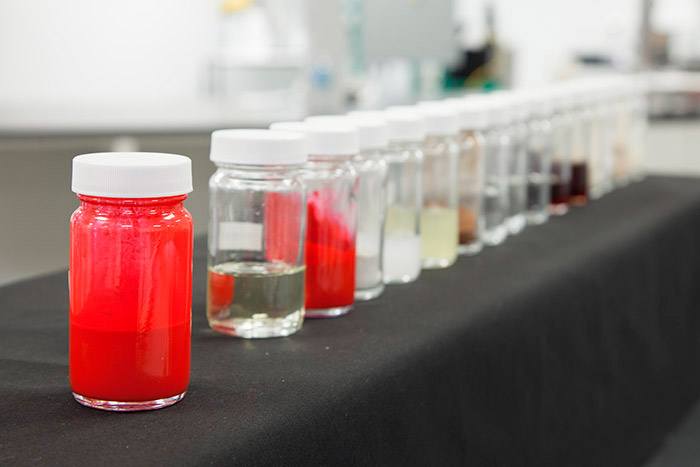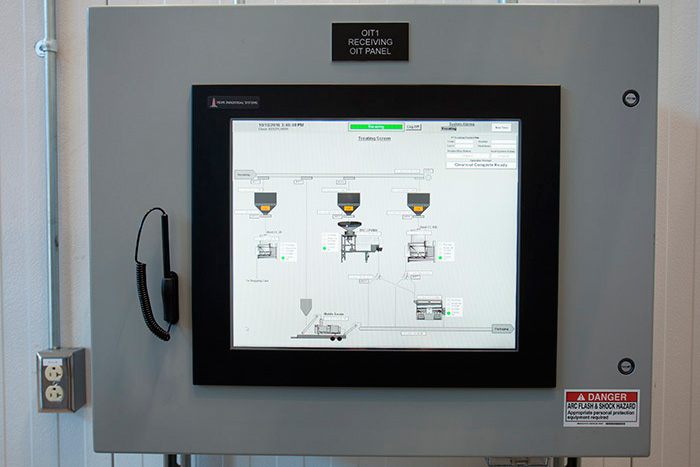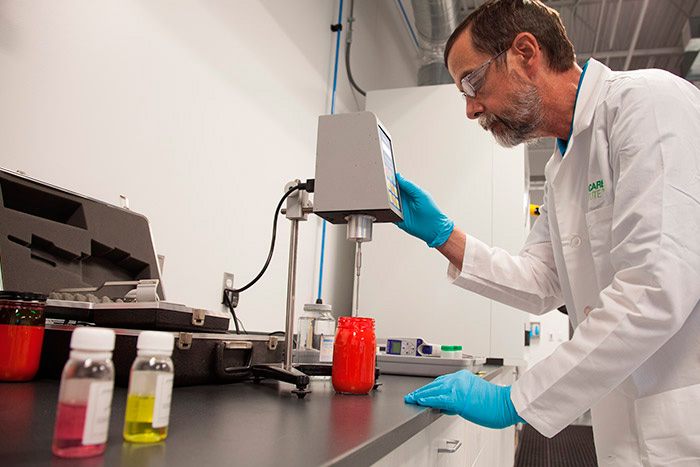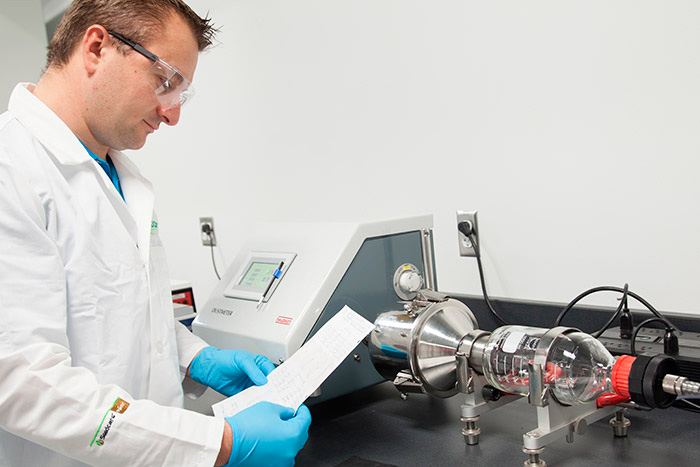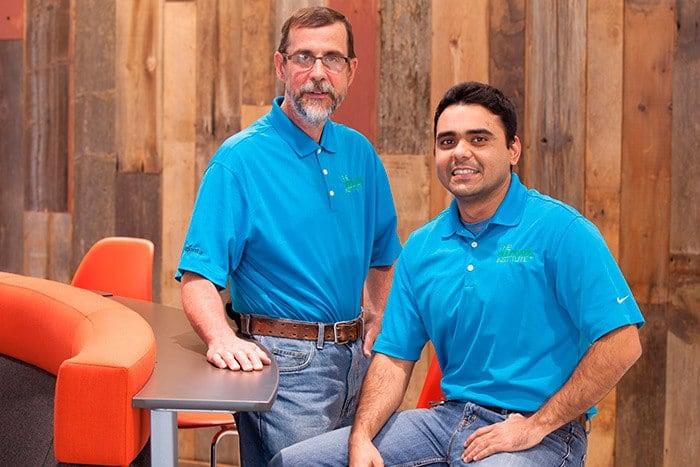The New Syngenta Seedcare Institute Shares Best Practices for Treating Seeds
The Seedcare Institute gives visitors the chance to see and experience the latest developments in seed treatment technology.

At first glance, the township of Stanton, Minnesota, with its population of 1,130 residents, seems to be an unlikely place to serve as the epicenter of North American seed treatment innovation. After all, the bustling, tech-savvy Twin Cities are just an hour’s drive to the north. And three hours to the south is Des Moines, an area known for its agricultural acumen. But with the recent grand opening of the new Syngenta Seedcare Institute™, Stanton is now the global place for innovation in seed treatment technology. This 38,000-square-foot, state-of-the-art research and training facility not only builds on the Seedcare™ product legacy of Syngenta, it also demonstrates the company’s thought leadership in this area.
“As the seed treatment industry continues to evolve, we strive to consistently offer more sophisticated products and best-in-class service to our customers,” says Ravi Ramachandran, Ph.D., head of the North America Seedcare Institute.
The Stanton facility is one of a dozen Syngenta Seedcare Institutes around the world, including locations in Switzerland, Brazil, France and China. The original structure in Stanton opened in 1995; however, with seed treatment in North America accounting for more than 30 percent of the global market, building a new, larger institute became a top priority for Syngenta.
Five-times larger than the former Seedcare Institute in Stanton, the new facility houses:
“This $20 million investment in the Stanton Seedcare Institute will help U.S. farmers grow more, while using fewer resources and protecting the environment,” says Vern Hawkins, president of Syngenta Crop Protection in North America.
Watch the Seedcare Institute Video
Improving the Customer Experience
Located in the heart of the Corn Belt and Minnesota’s agriculture breadbasket, the Seedcare Institute gives visitors the opportunity to see and experience the latest innovations in seed treatment technology.
Within the new structure is a large-scale commercial application and performance area. Syngenta Seedcare experts in Stanton can tailor seed-treatment recipes for individual customers and their specific geographic needs, and then scale up the recipes from the lab to commercial-size treaters. They can also simulate various climate conditions at the time of treatment and adjust recipes for different crops and seed-treating equipment. These tailor-made recipes often translate into more efficient treatments with more effective performance.
“We educate our customers through application training at the Seedcare Institute, where they can learn both basic and advanced levels of seed treatment application, including recipe customization, hands-on application techniques and equipment automation training,” says Ramachandran.
Stewarding Seed Treatments
Syngenta is also a strong proponent of seed treatment stewardship. To this end, education at Stanton includes making sure customers understand best practices in handling and applying products, as well as maintaining safety standards for themselves and the environment.
“Training and education are areas where Syngenta has really excelled through the years,” says Ramachandran. “This facility can provide the intensive training needed by our customers to fully realize the value of our seed-applied technologies, best-management practices and stewardship.”
Even before the new facility opened, customers were increasingly making the pilgrimage to Stanton for the latest in seed treatment training. In 2015, the Seedcare Institute in Stanton trained 1,170 customers—an increase of 368 percent more than the 250 trained there in 2013.
Today, the staff at Stanton is gearing up for a busy 2017—the first full year Syngenta customers can experience the new facility. “Our customers have expressed a great desire to get trained at our Institute,” Ramachandran says. “Collaborating with major equipment technology providers, the Syngenta Seedcare Institute showcases and trains our customers in the latest application technology. They need to know how to apply and service, how to calibrate equipment, and how to deliver the right dose on the seed. The Seedcare Institute addresses these needs and enhances the whole customer experience.”
View Photo Gallery
A Heritage of Seed Treatment Innovation
Time and time again, Syngenta has illustrated its commitment to Seedcare via the seed treatment offerings it has provided for more than 36 years, beginning with the introduction of Concep® seed safener for sorghum in 1979. That commitment continues today with treatments that protect seeds across a wide variety of crops against a plethora of diseases, insects and nematodes.
“When our customers first step foot into the Seedcare Institute in Stanton, they immediately know that they’re in a one-of-a-kind facility,” says Palle Pedersen, Ph.D., head of Seedcare product marketing at Syngenta. “But it’s not just the newness of the building that impresses them. It’s also the level of expertise, knowledge and accessibility of our employees. There’s nothing else like it on the continent.”
“As the seed treatment industry continues to evolve, we strive to consistently offer more sophisticated products and best-in-class service to our customers,” says Ravi Ramachandran, Ph.D., head of the North America Seedcare Institute.
The Stanton facility is one of a dozen Syngenta Seedcare Institutes around the world, including locations in Switzerland, Brazil, France and China. The original structure in Stanton opened in 1995; however, with seed treatment in North America accounting for more than 30 percent of the global market, building a new, larger institute became a top priority for Syngenta.
Five-times larger than the former Seedcare Institute in Stanton, the new facility houses:
- Research and development laboratories
- Laboratories for application, plantability, dust-off and quality-assurance testing
- Climate-controlled application and planter-testing laboratories
- A large-scale commercial application and performance area to simulate real-life experiences for customers
- Modern classroom facilities
- A seed warehouse
- Offices and meeting spaces
“This $20 million investment in the Stanton Seedcare Institute will help U.S. farmers grow more, while using fewer resources and protecting the environment,” says Vern Hawkins, president of Syngenta Crop Protection in North America.
Watch the Seedcare Institute Video
Improving the Customer Experience
Located in the heart of the Corn Belt and Minnesota’s agriculture breadbasket, the Seedcare Institute gives visitors the opportunity to see and experience the latest innovations in seed treatment technology.
Within the new structure is a large-scale commercial application and performance area. Syngenta Seedcare experts in Stanton can tailor seed-treatment recipes for individual customers and their specific geographic needs, and then scale up the recipes from the lab to commercial-size treaters. They can also simulate various climate conditions at the time of treatment and adjust recipes for different crops and seed-treating equipment. These tailor-made recipes often translate into more efficient treatments with more effective performance.
When customers visit Stanton, they actively participate in the experience. An integral part of the new design is space for modern classroom facilities and a customer interaction center, which features multimedia demonstrations about Seedcare products and services.“This facility can provide the intensive training needed by our customers to fully realize the value of our seed-applied technologies, best-management practices and stewardship.”
“We educate our customers through application training at the Seedcare Institute, where they can learn both basic and advanced levels of seed treatment application, including recipe customization, hands-on application techniques and equipment automation training,” says Ramachandran.
Stewarding Seed Treatments
Syngenta is also a strong proponent of seed treatment stewardship. To this end, education at Stanton includes making sure customers understand best practices in handling and applying products, as well as maintaining safety standards for themselves and the environment.
“Training and education are areas where Syngenta has really excelled through the years,” says Ramachandran. “This facility can provide the intensive training needed by our customers to fully realize the value of our seed-applied technologies, best-management practices and stewardship.”
Even before the new facility opened, customers were increasingly making the pilgrimage to Stanton for the latest in seed treatment training. In 2015, the Seedcare Institute in Stanton trained 1,170 customers—an increase of 368 percent more than the 250 trained there in 2013.
Today, the staff at Stanton is gearing up for a busy 2017—the first full year Syngenta customers can experience the new facility. “Our customers have expressed a great desire to get trained at our Institute,” Ramachandran says. “Collaborating with major equipment technology providers, the Syngenta Seedcare Institute showcases and trains our customers in the latest application technology. They need to know how to apply and service, how to calibrate equipment, and how to deliver the right dose on the seed. The Seedcare Institute addresses these needs and enhances the whole customer experience.”
View Photo Gallery
A Heritage of Seed Treatment Innovation
Time and time again, Syngenta has illustrated its commitment to Seedcare via the seed treatment offerings it has provided for more than 36 years, beginning with the introduction of Concep® seed safener for sorghum in 1979. That commitment continues today with treatments that protect seeds across a wide variety of crops against a plethora of diseases, insects and nematodes.
The new Seedcare Institute shares best practices for treating seeds. @SyngentaUS #agtech
“In 2008, only 40 percent of soybean seeds were treated,” says Jamie Eichorn, head of Syngenta Seedcare for North America. “Today, an estimated 80 percent of the crop is treated.”
This rise in treatment reflects the devastating losses growers have experienced from underground pests. For example, soybean cyst nematodes (SCN) cost the U.S. soybean market an estimated $1 billion each year. Because seed treatments offer in-the-soil protection at planting, visitors to Stanton want to learn more about technologies—such as Clariva® Complete Beans seed treatment, a combination of separately registered products—that can help growers manage SCN. The Stanton facility, which houses the ag world’s most sophisticated laboratories and most knowledgeable seed treatment experts, can help visitors understand how specific seed treatments can positively impact crops in their local areas.
click to tweet ![]()
“When our customers first step foot into the Seedcare Institute in Stanton, they immediately know that they’re in a one-of-a-kind facility,” says Palle Pedersen, Ph.D., head of Seedcare product marketing at Syngenta. “But it’s not just the newness of the building that impresses them. It’s also the level of expertise, knowledge and accessibility of our employees. There’s nothing else like it on the continent.”


